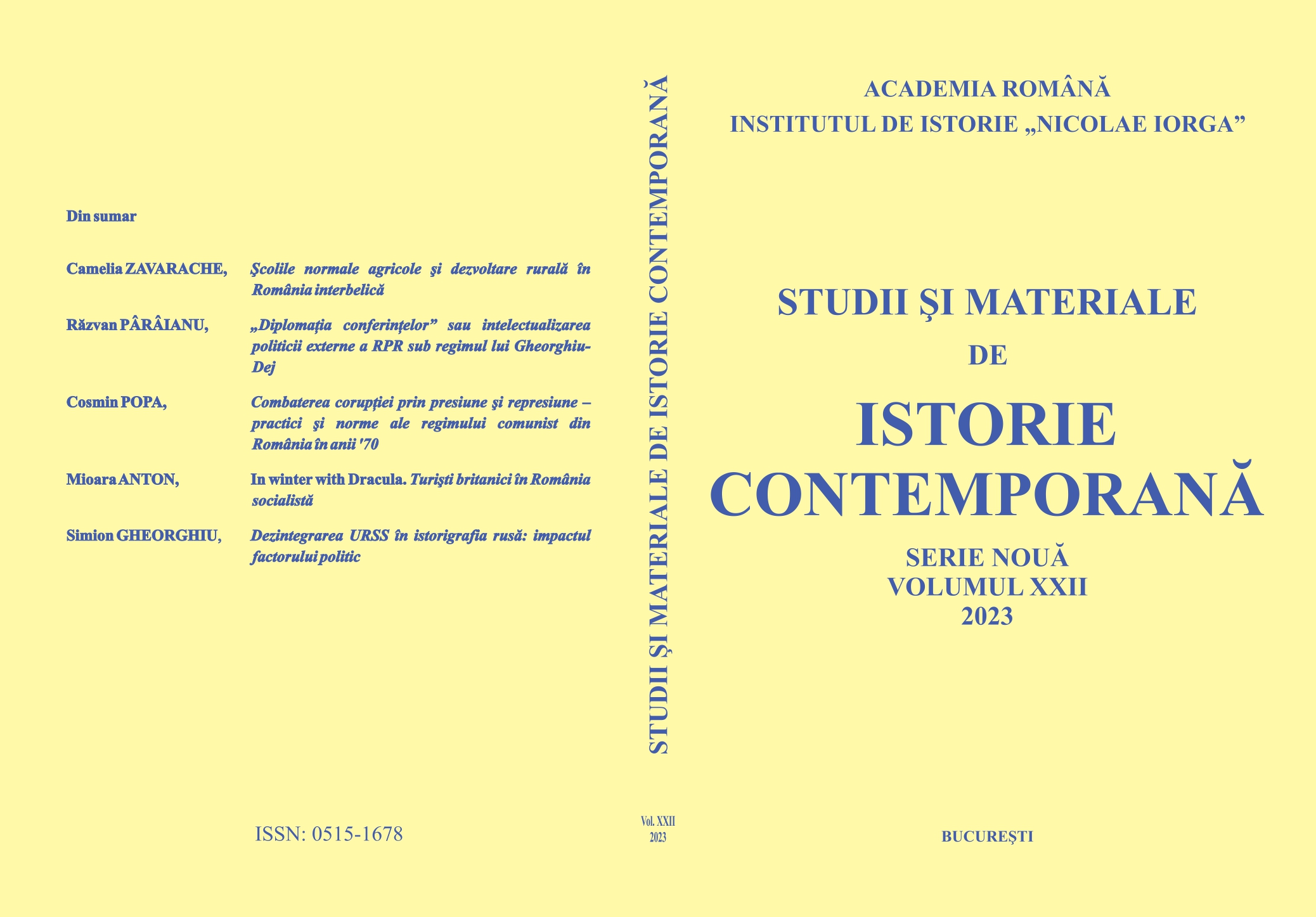Şcolile normale agricole şi dezvoltare rurală în România interbelică
Normal Agricultural Schools and Rural Development in Interwar Romania
Author(s): Camelia ZavaracheSubject(s): History, Economic history, Local History / Microhistory, Social history, Recent History (1900 till today), Interwar Period (1920 - 1939)
Published by: Institutul de Istorie Nicolae Iorga
Keywords: normal schools; primary school teachers; agricultural studies; interwar Romania; Dimitrie Gusti;
Summary/Abstract: This article examines the activities of two normal schools with agricultural profile in Grădiştea, Vlaşca County and Caracal, Romanaţi County. The institutions were created by Constantin Angelescu, the Ministry of National Education, at the end of the summer of 1937. Their founding showed the sense of urgency displayed by the liberal government regarding the improved teaching of agricultural studies in normal schools as well as the level of agricultural practice among young teachers. The schools, both experimental endeavours, had, according to documents in the archive of the Ministry of National Education, contrasting fates: the one in Grădiştea was successful; the other, in Caracal, was a bitter disappointment. However, I argue that their activities were significantly marked by the establishment of King Carol II’s authoritarian regime in February 1938. In the summer of that year, Dimitrie Gusti’s close collaborators took over the leadership of Ministry of Education. Gusti’s ideas about rural development shaped the subsequent legislation regarding primary and normal schools; as a consequence, both institutions were disbanded.
Journal: Studii şi materiale de istorie contemporană (SMIC)
- Issue Year: 22/2023
- Issue No: 22
- Page Range: 43-69
- Page Count: 27
- Language: Romanian
- Content File-PDF

